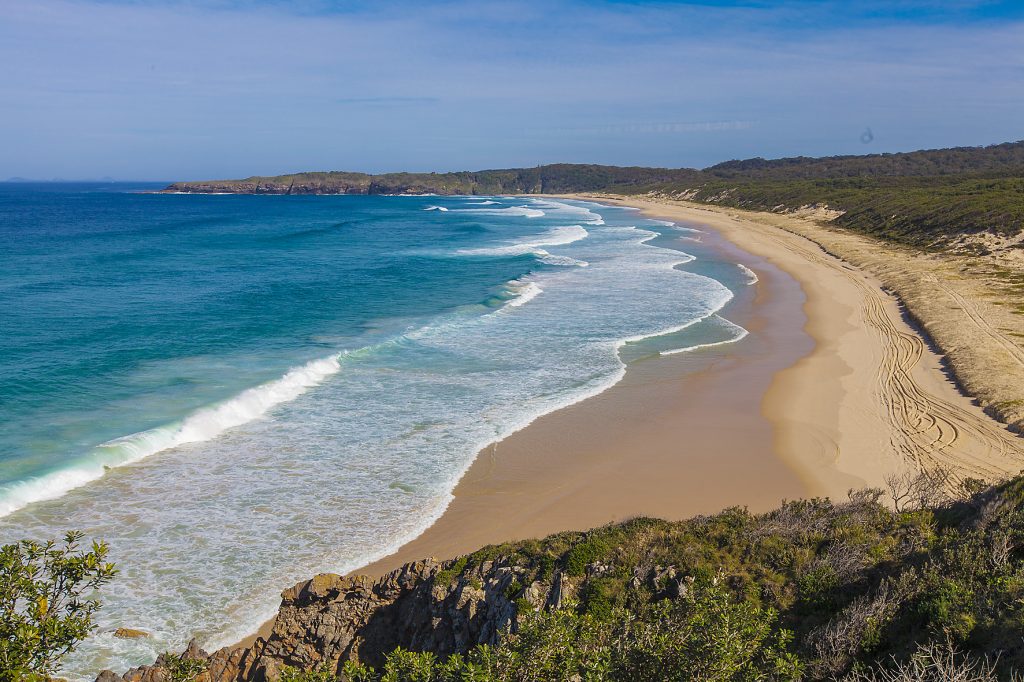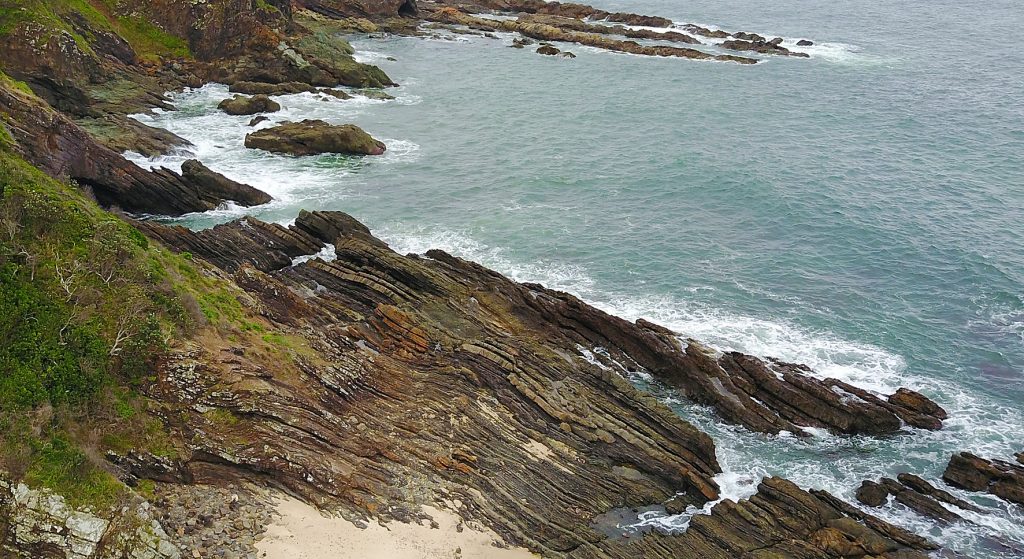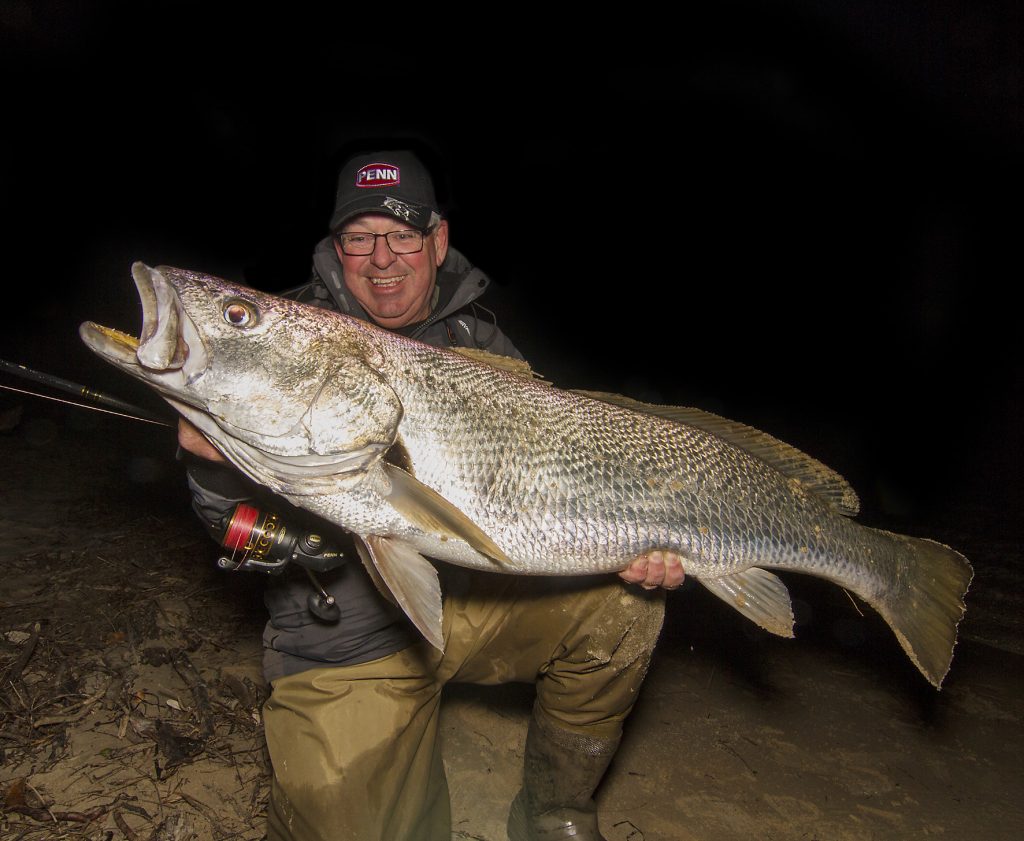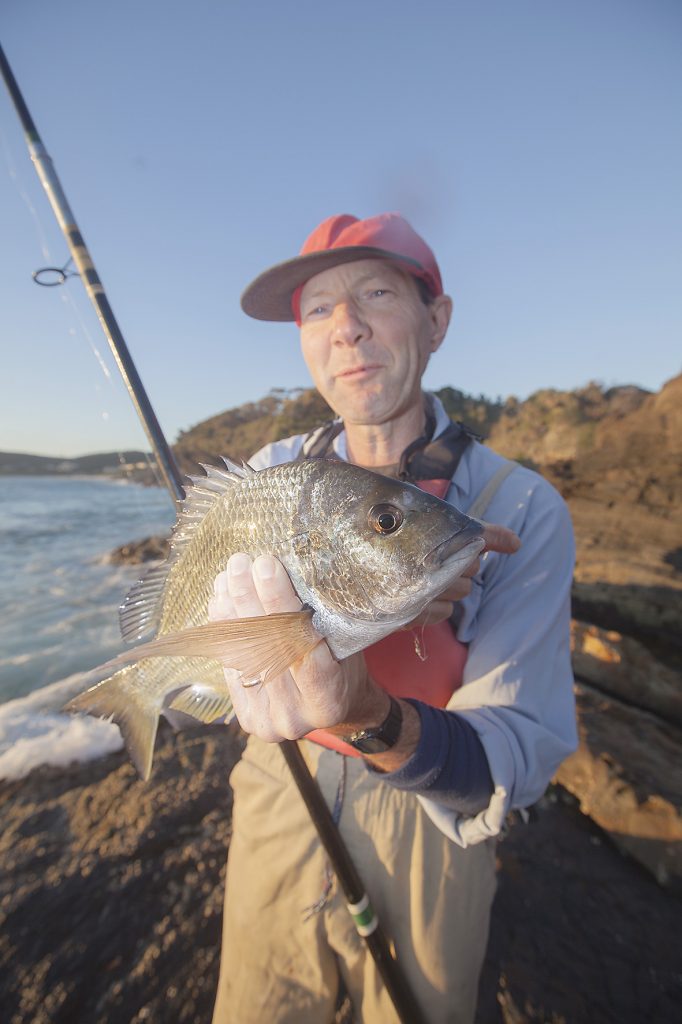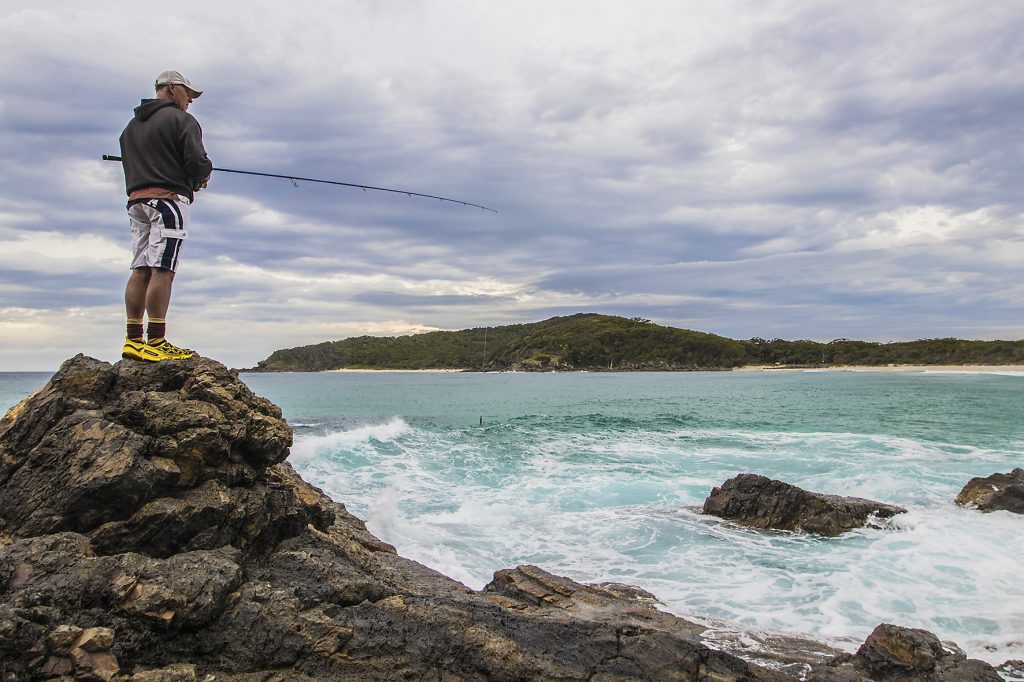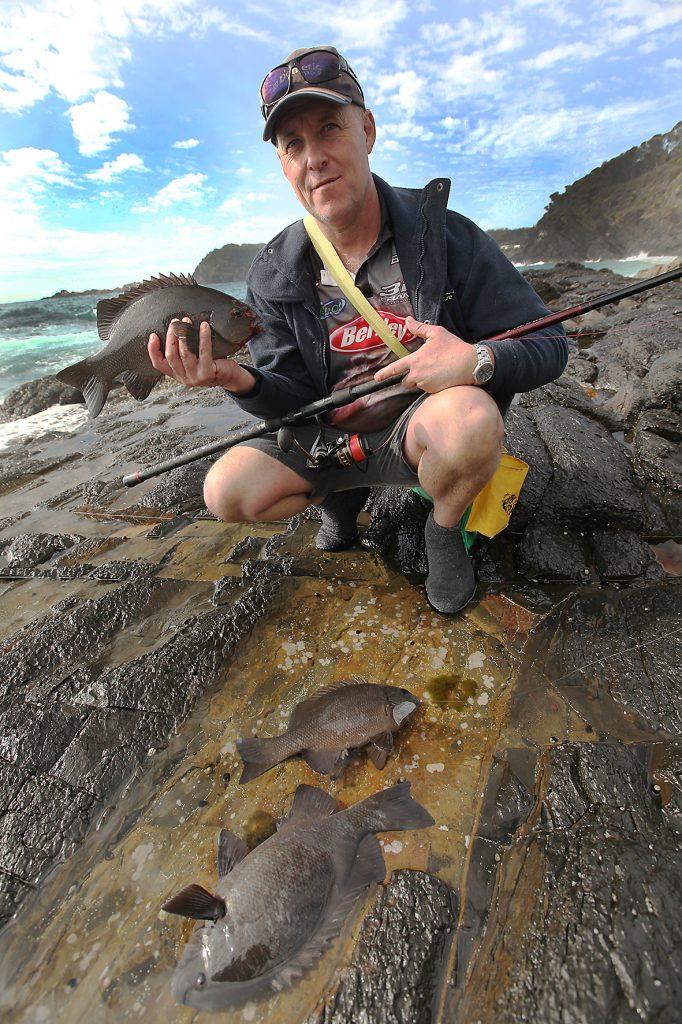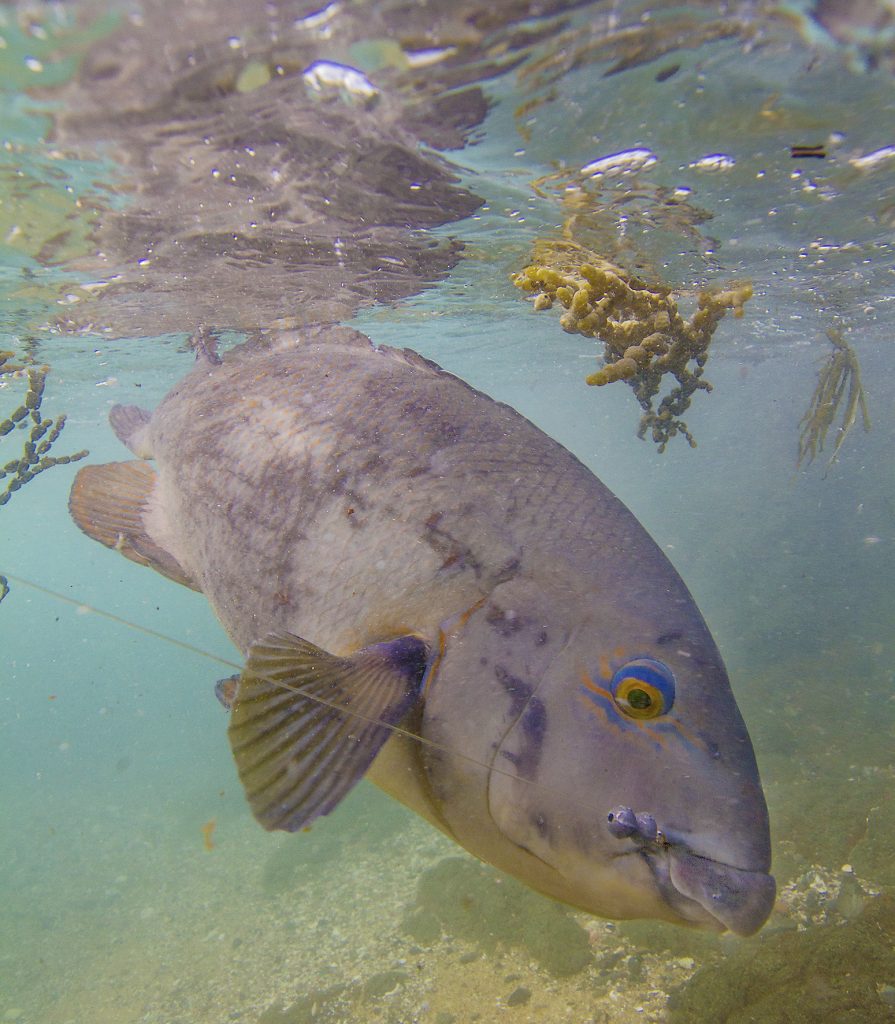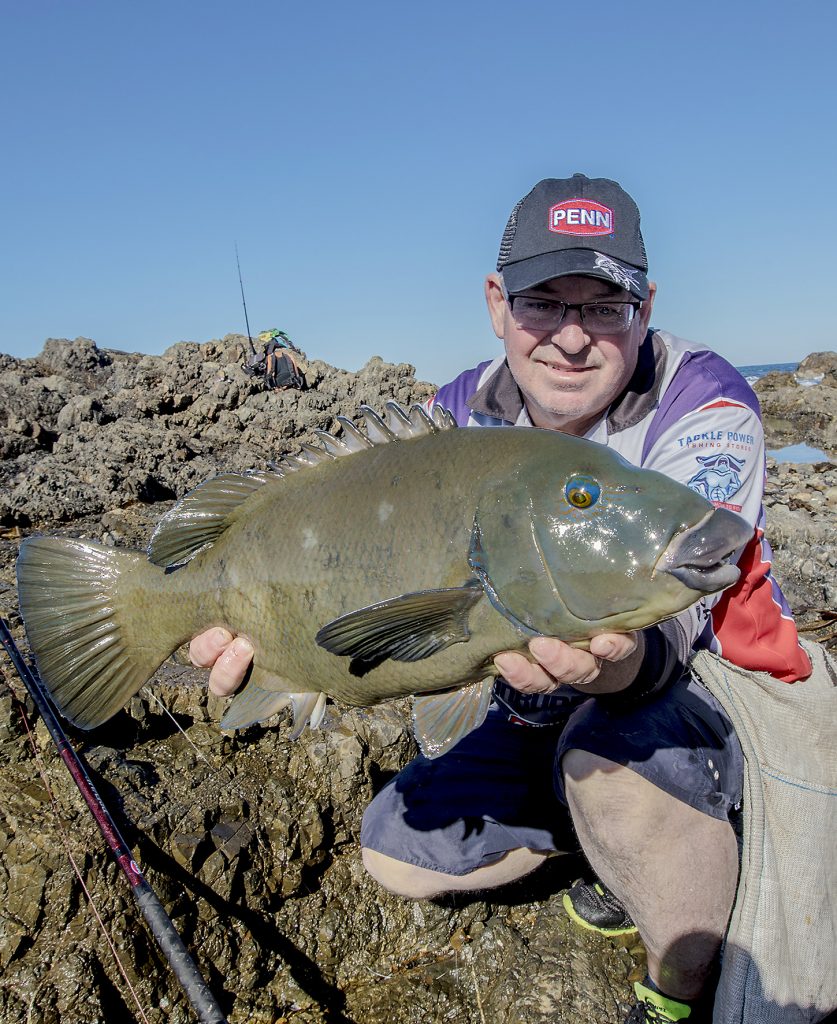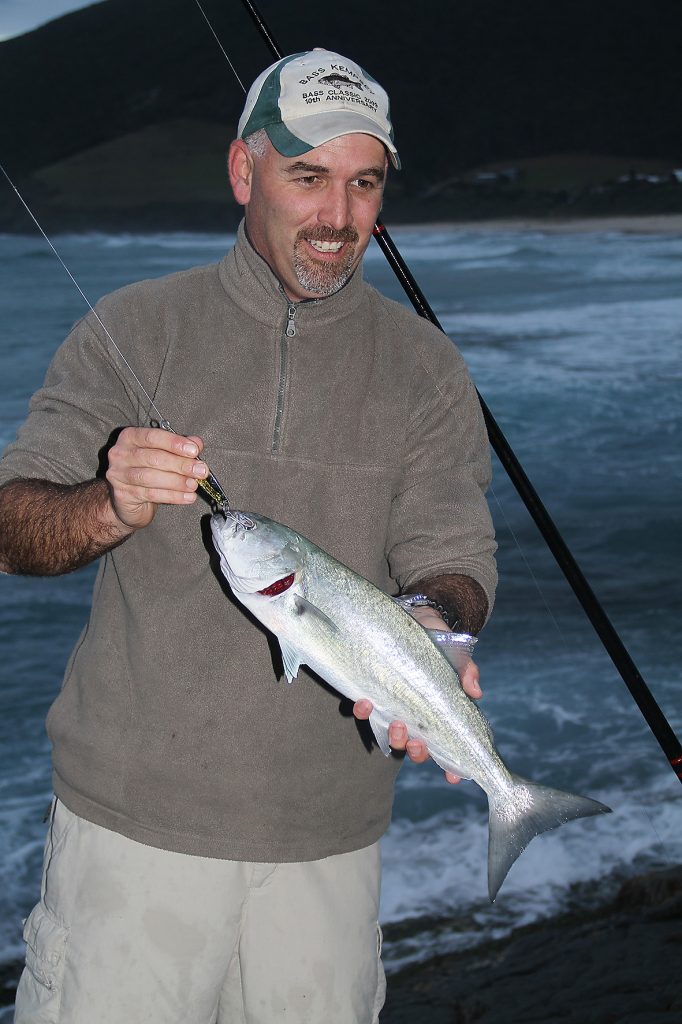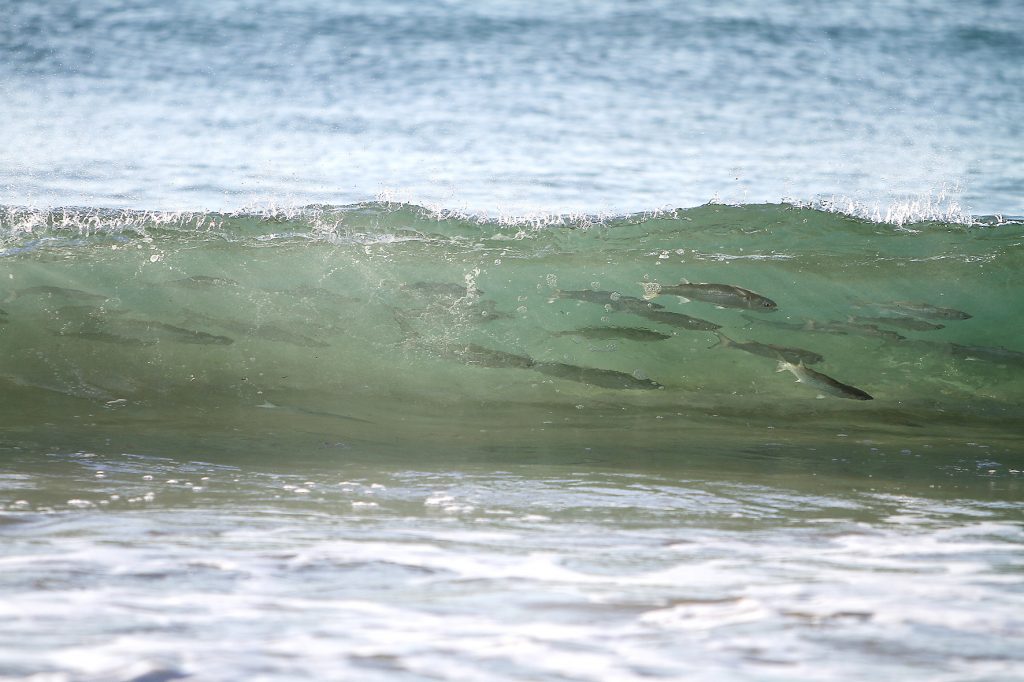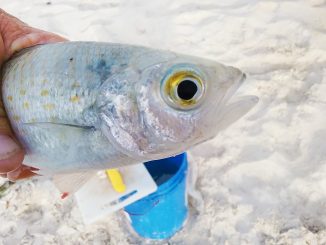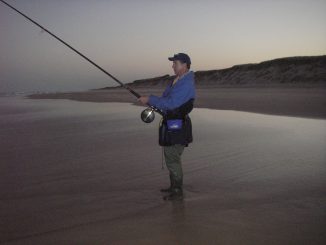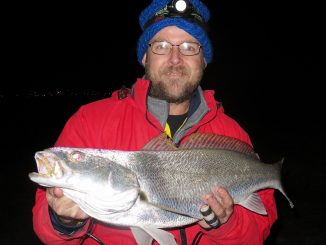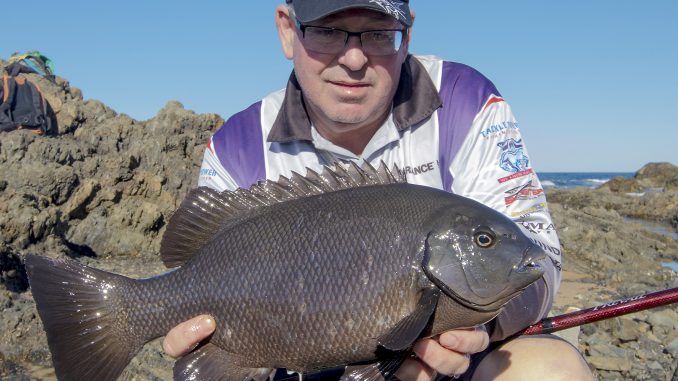
by David Seaman •
In NSW the seascape changes from high cliffs and deep water in the south, to shallow fingers of rocks and broken reef around the Mid Coast. The common feature that extends around the entire coastline is the connection of headlands by golden strips of sand, interrupted only by coves, bays and entrances to estuaries.
These coastal fringes also support a transition of angling species with seasonal overlaps, and species uniquely adapted to certain areas. The distribution range of species is often regulated by water temperature, which may also determine the particular food source the fish depend on for existence. Like any scenario, the middle ground is where you will find the greatest diversity of species, and this is where the greatest seasonal overlaps occur.
The Mid Coast of NSW from Seal Rocks to Coffs Harbour is as vast as the species that live and visit the area. While offshore can offer incredible fishing, it is the rock and beach fishing that attracts many anglers to the area at various times of the year. The autumn to winter transition is perhaps the most productive period of the year for the beach and rock angler. The seasonal spawning run of mullet, bream and luderick is underway, and with it come the shadowing predators like sharks, pelagics and mulloway.
Live baiting
Early autumn draws an incredible concentrated effort by anglers for pelagics. Longtail tuna, cobia, mackerel tuna and Spanish mackerel all figure in the pursuits of the land-based game anglers that travel hundreds of kilometres to the local ledges.
Shoals of garfish flood down the coast with the currents, followed by the cobia and longtails. From April to the end of May, it is not unusual to spin or live bait Spanish mackerel from the rocks.
Each year the offshore spotty and Spanish mackerel fishery seems to get better and last a little longer, and this can be a bonanza for the dedicated rock anglers.
The staple targets are certainly the cobia or longtail tuna, but with the pelagic fish come the sharks that ruin trophy fish and devastate anglers.
Any headland that stretches to deeper water is worth a look and Charlottes Head (Seagull), Bennetts Head or Cape Hawke all come into play.
Anglers who fish the rock and beach fringes generally do it to take a feed home. Whether it is fresh tailor from a gutter on the beach or a few rock blackfish from under a rocky wash, there is something for every taste. Except for tailor and mulloway, the majority of species are best targeted on a variety of bait, both bought and collected around the area you intend to fish.
Beach fishing
Beach fishing has a charm all its own, and having a stretch of beach to yourself is something special. The comfort of fishing in relative safety from the soft sand, watching the sunrise and catching the early morning tailor bite is something many thrive on. The variety of species available changes with the sunrise, but can make a few hours on the beach very productive. Throwing metal lures to the back of a gutter or waves is the easiest way to prospect for the tailor and salmon that haunt the autumn waters.
Finding gutters to fish may take a bit of investigation, usually a day or so. If you have indulged yourself and have a drone, you can check a lot of potential gutters along the beach from the carpark. I find it generally sufficient to go straight up and just look along the beach from the high vantage point. Alternatively, if you don’t have sufficient time to do the leg work, or flight time, you can fish the transition from beach to rocks where there will be current and sufficient calm water to cast a lure or bait. This area attracts the bait, depending on the direction of the swell, by creating an eddy.
A pilchard or garfish rigged on a 3-4 hook ganged rig with a short trace to a sliding ball sinker may be old school fishing, but that’s because it works a treat and is a relaxed alternative to actively spinning the wash.
As the sun and the tide rises on the beach, other species like bream, whiting, dart, flathead and trevally come into play. Beach worms are by far the best bait and can often be caught where you’re fishing. Alternative baits include yabbies, frozen worm and pipis that can be rigged on a bait keeper style hook, a short trace and a running ball sinker to keep the rig moving with the wave surge.
Another popular rig is the paternoster with two droppers and a sinker at the bottom of the rig. The paternoster is certainly easier to cast and provides a second chance when the fish may be a bit picky, and each hook can have different baits. This rig is great for fishing gutters where the outer breakers calm over deeper water before reaching the shore. While fish like tailor, mulloway and salmon are a chance during the daylight hours, it is best to concentrate your efforts on low light periods and at night to increase your chances of catching bigger fish.
If you like to catch mulloway on plastics, the best tip is to fish the transition zone of rock and beach. In the early morning and late afternoon, fish pass and hang around these areas waiting for the mullet and other bait to pass by. It’s also no secret the mulloway like to eat kelpies (wrasse) and other rock species, so fishing close to the rocks isn’t a bad ploy for mulloway.
Rock species
Perhaps the best eating fish you could expect from the rocks is the eastern rock blackfish, often referred to as black drummer or pigs. It is related to the luderick and not a drummer at all, but what you call it changes nothing of the fish’s ability to fight hard and taste good. The true beauty of the rock blackfish is it is bound by tides and not the time of day, and during the middle of winter this is a bonus for anyone who doesn’t like the early morning cold. A rising tide over broken reef or a deep rock shelf is the only thing you need to make the most of their feeding habits. Exposed areas of rocks at low tide become a grazing paddock for pigs as the water rises sufficiently for them to access it. It is often possible to see the pigs’ tails waving above the water surface as they feed, head down over the rocks.
Cunjevoi and abalone gut (ab gut was banned from use in 2007 by DPI) are the natural, non-herbivorous baits that anglers used to use. Over-harvesting of cunje can strip an area bare, and this is why I use Australian cooked or green prawns. The advantage is you don’t waste time collecting bait, or risk your safety, and it preserves the natural growth on the rocks. Other advantages are the prawns are a relatively clean bait, the heads and shell contribute to the trickle of berley and they are readily available from major supermarkets for the planned or spur of the moment fish.
Fish in the 1-2.5kg bracket are the best eating size for the pigs, with larger specimens becoming tough when cooked.
Rock fishing does present a vast range of options, and even if you are fishing for a particular species, you never know what is going to eat your bait. Groper are one species that will eat anything and will be attracted to the berley trail in no time. Size and bag limits for all species should be checked prior to keeping any fish. If you don’t know what the fish is, it is best to release it. When fishing for pigs, there is a fair chance you’ll encounter a groper and this is why you should be sporting a fast-tapered rod around the 3-4m mark, a large threadline reel of about 5000 size or bigger, and 20-30lb braid. On deeper ledges, you can get away with lighter line, but over shallow and broken reef you need to fish a bit heavier.
Bream from the rocks are opportunistic when it comes to baits. There is generally only one rig I use for all my bait fishing from the rocks, and the only difference between fishing for groper or bream is the size of the terminal tackle. I use a 2m length of leader tied to the mainline with an FG knot, then a 00-0 ball sinker running to a suicide style hook with a turned in or out eye. The reason I don’t use a swivel for the leader connection is because it puts more weight on the line and is a potential snag point between the reef crevices.
Generally, bream are a by-catch of pig fishing for me, and while this time of the year will surrender fish over 1.5kg, they are generally released. The best of the bream fishing from the rocks is low light periods, and baits of yabbies, worm and prawns are perfect.
Rock fishing for luderick is best done on the dark of the moon using a method called ‘potholing’. The larger tides during this phase of the moon cycle give the fish access to areas with the advantage of complete darkness. The school will swim into a pocket of water as the wave surges and fills the area, graze and retreat as the water drains out. Live and metho yabbies are the best baits on a rod length of leader. Most often it is a matter of dropping your bait in the water, allowing the surge to rise and poling in a fish. This does depend on you doing your homework and finding schools of fish first. The blackfish from the rocks, I believe, taste heaps better than any from the rivers and lakes.
Fishing the rocks at night is not something you do without significant risk and without planning. Always have an escape path from your chosen platform, be very conscious of the stage of the tide, wear a lifejacket, have a waterproof torch tied to you somewhere, and never fish alone.
The beauty of the Mid Coast area is that any rocky headland will have populations of resident and transient fish, enough to satisfy any rock angler. The key to success is to be mobile. If one spot isn’t fishing well, you can pack up, and with a short drive you’ll have another spot that may fire.
Berley isn’t always essential, especially over the shallow reef areas. A trickle of mashed and soaked bread will attract the desired species like bream and pigs, but it also attracts the butterfish and toads that can frustrate anglers and destroy baits. Before deploying berley, have a few casts to gutters in the rocks where channels are formed between rocky outcrops.
I hope this information sees you taking advantage of this beautiful time of year, and making the most of the great beach and rock fishing this part of the world is famous for.
Baits
- Cooked prawns
- Live beach worms
- Cunjevoi
- Crabs,
- Whole fish
- Fish fillets
- Yabbies
- Ganged pilchards
- Ganged Garfish
- Ganged whole squid
Lures
- Cordell pencil popper
- Gulp 7” Jerkshad on 1oz jighead
- 50 to 65g metal slugs
Hooks
- Mustad 542 1/0 and 2/0 Owner SSW 5111 for groper and pigs.
- Owner 1/0 SSW 5111 for bream, and 3 ganged 3/0 Mustad 4202 for tailor and salmon.
Tides
A rising tide is always the best option. Whether it is a pre-dusk fish for mulloway on the beach or a midday pig fish, the rising tide provides a greater water depth and access for the fish to the intertidal zone. New and full moon periods will provide the greatest variation in depths, especially from the rocks.
Rock Safety
Wherever possible, fish with a friend and wear an automatic inflating PFD or PFD with head support. Manual devices are ok if you enter the water in a conscious state, but are useless if you strike your head when entering the water. The aeration of water around the wash areas can significantly reduce buoyancy and even the strongest swimmers may be drowned in rough conditions.

